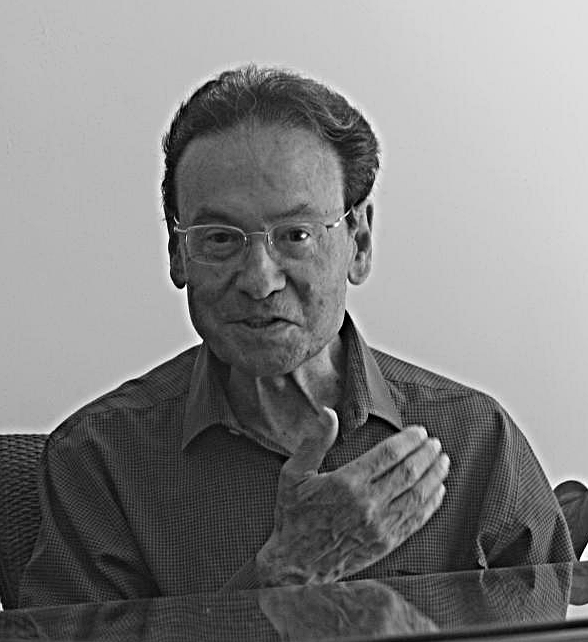Complexity of repetition
DOI:
https://doi.org/10.11606/issn.1980-4016.esse.2019.154652Keywords:
Rhythm, Aspect, Tempo, Repetition, Textual progressionAbstract
The vast presence of repetition in texts invites multiple approaches. On this article, we investigate the relation of repetition and the construction of tension, expectation, and, finally, a textual rhythm. To do so, we inquire on its role as the manifestation of a manifested structure, which is organized around the notions of aspect and tempo. Such configuration is thus drawn up by means of the investigation of extreme cases: impossible texts. We then compare repetition with the mechanisms behind isotopy and explanation and argue for a difference in the configuration of tensive styles, where repetition, initially lacking stress and direction, later produces an ascending style of tension due to the excessive permanence on the same unstressed state. Finally, the structure under scrutiny is approached from the perspective of the text as a whole and repetition is treated as a factor on the construction of the evolution regime of texts, which is seen as progressing in small, localized circles, in large arches (taking up the whole text), or by intertwining circles in a spiral progression. The bond between what is lacking and what surprises which is brought to light by the inner workings of repetition seems to bring about a tensive solution to the opposition between classical French school semiotics and the point of view inaugurated by Claude Zilberberg.
Downloads
References
BADIR, Sémir. Épistémologie Sémiotique. Paris : Honoré Champion, 2014.
BISHOP, Elizabeth. The Complete Poems: 1927-1979. Nova York: Farrar, Strausand Giroux, 1984.
FIORIN, José Luiz. Figuras de Retórica. São Paulo: Contexto, 2014.
FRÉDÉRIC, Madeleine. La répétition: Étude linguistique et rhétorique. Tübingen: Niemeyer, 1985.
GÉRARD, Christophe. Sémantique et linéarité du texte: La place du rythme em sémantique des textes. Texto! Textes et Cultures. Vol. 11(1), 2006. Disponível em: http://www.revue-texto.net/1996-2007/Inedits/Gerard/Gerard_Linearite.html. Consultado em 8/fev/2019.
GREIMAS, Algirdas Julien; COURTÉS, Joseph. Dicionário de Semiótica. São Paulo: Contexto, 2011.
HJELMSLEV, Louis. Résumé d’une théorie du langage. Tradução e edição eletrônica de Alain Herreman. 2010. Disponível em: <http://resume.univ-rennes1.fr/>. Consultado em: 4/fev/2019.
HJELMSLEV, Louis. Prolegômenos a uma Teoria da Linguagem. Série Estudos. Tradução de J. Teixeira Coelho Netto. 2 ed. São Paulo: Perspectiva, 2003.
HJELMSLEV, Louis. Por uma semântica estrutural. In: Ensaios Linguísticos. SãoPaulo: Perspectiva, 1991.
LINDENBERG LEMOS, Carolina. La place de la répétition dans la sémiotique hjelmslevienne. Estudos Semióticos. [online] Disponível em: http://www.revistas.usp.br/esse/article/view/140733/135666. Editoras do número: Valeria De Luca; Carolina Lindenberg Lemos. Número especial, São Paulo, p. 18-29, novembro 2017a. Consultado em: 8/fev/2019.
LINDENBERG LEMOS, Carolina. A Linearidade entre Estrutura e Manifestação. In: Altman, C.; Testa-Torelli, L. (orgs.), Cadernos de historiografia linguística do CEDOCH [livro eletrônico]: Por ocasião do centenário do Curso de Linguística Geral (1916). Disponível em: http://cedoch.fflch.usp.br/sites/cedoch.fflch.usp.br/files/u63/cadernos_2_2017-07-02.pdf. São Paulo: FFLCH/USP, p. 110-122, 2017b. Consultado em: 8/fev/2019.
LINDENBERG LEMOS, Carolina. Condições Semióticas da Repetição. Tese de doutorado. Faculdade de Filosofia, Letras e Ciências Humanas, Universidade de São Paulo / Faculté de Langues et Lettres, Université de Liège, São Paulo/Liège, 2015. Disponível em: http://www.teses.usp.br/teses/disponiveis/8/8139/tde-09062015-111352/publico/2015_CarolinaLindenbergLemos_VCorr.pdf. Consultado em: 4/fev/2019.
LINDENBERG LEMOS, Carolina. Répétition, isotopie et tensivité. Actes Sémiotiques [online], n. 115, 2012. Disponível em: https://www.unilim.fr/actes-semiotiques/1455. Consultado em: 6/fev/2019.
MELO NETO, João Cabral. Serial e antes. Rio de Janeiro: Nova Fronteira, 1997.
MOLINIÉ, Georges. Problématique de la répétition. Langue Française, vol. 101, p.102–111, 1994.
PAZ, Octavio. O Arco e a Lira. Tradução de Ari Roitman e Paulina Wacht. São Paulo: Cosac Naify, 2012.
POE, Edgar Allan. Complete Poems. Nova York: Penguin, 1996.
SADIE, Stanley (org.). Dicionário Grove de Música: Edição Concisa. Tradução de Eduardo Francisco Alves. Rio de Janeiro: Jorge Zahar, 1994.
SAUSSURE, Ferdinand de. Curso de Linguística Geral. Tradução de Antônio Chelini, José Paulo Paes e Izidoro Blikstein. São Paulo: Cultrix, 1997.
TATIT, Luiz. Hjelmslev e as Bases Tensivas do Semissimbolismo. In: Todos Entoam: Ensaios, Conversas e Lembranças. 2a ed. Cotia: Ateliê, 2014, p. 347-388.
TATIT, Luiz. Abordagem do texto. In: FIORIN, José Luiz (org.). Introdução à Linguística: Objetos Teóricos. Vol. I. São Paulo: Contexto, 2002, p. 187-209.
ZILBERBERG, Claude. La Structure tensive, suivi de Note sur la structure des paradigmes et de Sur la dualité de la poétique. Liège : Presses Universitaires de Liège, 2012.
ZILBERBERG, Claude. Elementos de Semiótica Tensiva. Tradução de Ivã Carlos Lopes, Luiz Tatit e Waldir Beividas. São Paulo: Ateliê, 2011.
ZILBERBERG, Claude. Observações sobre a base tensiva do ritmo. Estudos Semióticos. Vol. 6 (2), 2010, p. 1-13. Tradução de Lucia Teixeira e Ivã Carlos Lopes. Disponível em: http://www.revistas.usp.br/esse/article/view/49265/53347. Consultado em: 8/fev/2019.
ZILBERBERG, Claude. Razão e Poética do Sentido. Tradução de Ivã Carlos Lopes, Luiz Tatit e Waldir Beividas. São Paulo: Edusp, 2006.
ZILBERBERG, Claude. Rythme et générativité. Études littéraires. Vol. 29 (1), p. 21-38, 1996. Disponível em: http://id.erudit.org/iderudit/501144ar.Consultado em: 8/fev/2019.
ZILBERBERG, Claude. Plaidoyer pour le tempo. In: FONTANILLE, J. (dir.). Le devenir. Limoges : Pulim, 1995, p. 223-241
Downloads
Published
Issue
Section
License
Copyright (c) 2019 Carolina Lindenberg Lemos

This work is licensed under a Creative Commons Attribution-NonCommercial-ShareAlike 4.0 International License.
The authors grant the journal all copyrights relating to the work published. The concepts expressed in signed articles are absolute and exclusive responsibility of their authors.






